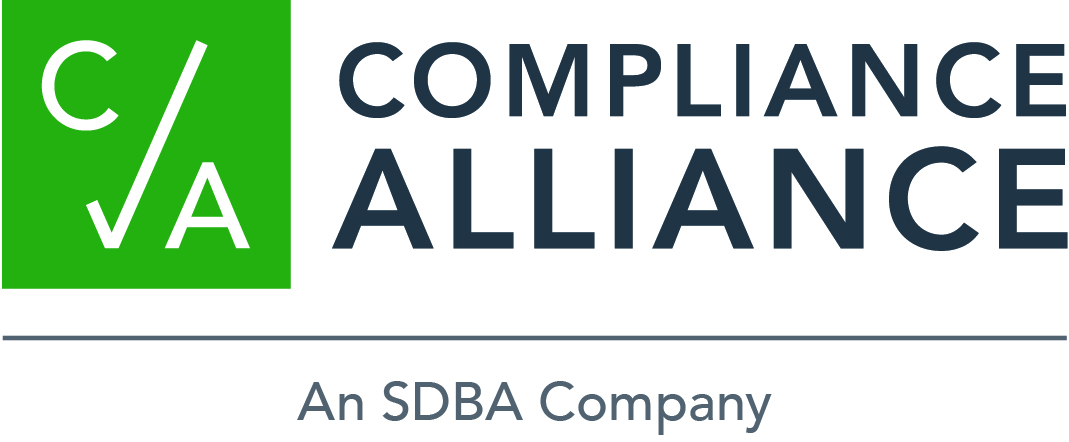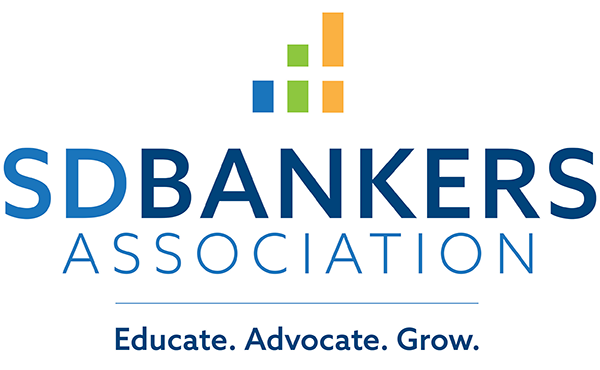Internal Penetration Testing--What is it good for?
Internal penetration testing is not a new concept in the banking industry, however it is gaining in popularity and leading people to ask more questions.
Do we perform a vulnerability assessment or a penetration test? Do we do both? If we do an internal penetration test, how do we know we are getting a quality test?
Join Secure Banking Solutions (SBS) for Hacker Hour: Internal Penetration Testing--What is it good for? on Wednesday, Jan. 20, at 2 p.m. CT. During the free webinar, SBS will walk through a step-by-step process outlining what a good internal penetration test looks like and uncover valuable tips on what to ask your vendors, ensuring you get a quality test.
Register for the webinar.
Dakota School of Lending Principles To Be Held March 29-April 1
The Dakota School of Lending Principles, hosted by the North Dakota Bankers Association and co-sponsored by the South Dakota Bankers Association, allows students to learn the theory and process of basic lending and then put this knowledge to work in actual nuts-and-bolts sessions.
The 2016 Dakota School of Lending Principles will be held March 29 to April 1 at the Radisson Hotel in Bismarck, N.D. The school provides basic instruction appropriate for loan officer trainees, loan support personnel and personal bankers.
To ensure exposure to bank structure and terminology, it is recommended that applicants have a minimum of six months lending experience or one year of loan department experience. Applicants not meeting the suggested prerequisites will be contacted to discuss admission qualifications.
Learn more and register today

Question of the Week
In determining whether or not Saturday is a business day for us, for TRID purposes, what does it mean “to be open for substantially all business functions?"
Read the answer.
Not a member? Learn more about membership with Compliance Alliance by attending one of our live demos:
Compliance Alliance offers a comprehensive suite of compliance management solutions. To learn how to put them to work for your bank, call 888.353.3933 or email.
Upcoming Events
- SDBA State Legislative Day: Feb. 10, 2016, Pierre
- NDBA/SDBA Bank Management Conference: Feb. 12-13, 2016, Scottsdale, Ariz.
- IRA Update Seminar: Feb. 18, 2016, Sioux Falls
- ABA Government Relations Summit: March 14-16, 2016, Washington, D.C.
View all SDBA events
Sponsorship Opportunity
Learn more about sponsoring the SDBA eNews.
Questions/Comments
Contact Alisa DeMers, SDBA, at 800. 726.7322 or via email.
|
ABA Prevails on Asset Test for FHLB Membership
The Federal Housing Finance Agency on Tuesday issued its final rule changing eligibility for membership in the Federal Home Loan Bank system. In a win for ABA and the state bankers associations, the FHFA did not include in the rule a controversial provision requiring all FHLB members to hold at least 1 percent of assets in home mortgage loans and larger members to have at least 10 percent of assets in residential mortgage loans on an ongoing basis.
“The statutory requirements for members to continue their commitment to housing finance can be addressed by monitoring the levels of residential mortgage assets they hold and we, therefore, decided not to include the ongoing investment requirements in the final rule,” remarked FHFA Director Mel Watt.
“We are pleased that FHFA listened to the more than 1,300 comment letters from ABA, state associations and banks opposing this provision,” said ABA President and CEO Rob Nichols. “There was no demonstrable need for the proposed changes, which contradicted congressional intent and would have harmed the FHLBs, their member banks and the communities they serve.”
The final rule did include restrictions on “captive insurance” companies’ membership in the FHLB system. ABA, ABIA and state bankers associations had raised concerns that the proposal to ban all captives was overly broad. The groups noted that they do share the FHFA’s concerns over otherwise ineligible entities using captives to gain access to the system but urged a less sweeping approach. The final rule, while still banning captive insurance companies, does appear to allow entities that are otherwise eligible for membership to retain membership in the system. ABA and ABIA will continue to evaluate all aspects of the final rule.
In October, a bipartisan group of lawmakers introduced a bill that would stop the FHFA from implementing any changes to FHLB membership -- including those related to captive insurers -- and require a Government Accountability Office study of the proposal’s effects. The final rule will take effect 30 days after it is published in the Federal Register. Read the final rule. For more information, contact ABA’s Joe Pigg or ABIA’s Kevin McKechnie.
Nichols Calls for More Clarity on Loan Loss Accounting Standard
In a letter to the Financial Accounting Standards Board on Wednesday, ABA President and CEO Rob Nichols called for more clarity on the proposed Current Expected Credit Loss accounting standard, highlighting several key concerns that must be addressed before the standard can take effect. Nichols’ letter comes in advance of a long-awaited roundtable -- which ABA has urged since 2014 -- that FASB plans to host with bankers, regulators and auditors to discuss the standard and its implementation.
At the core of ABA’s concerns is whether or not banks will be able to successfully implement CECL, and whether the model would actually result in an improvement in the accounting for credit impairment given its dependency on long-term economic forecasts, which are notoriously unreliable. Nichols pointed out that despite a number of discussions with FASB and others, no agreements have been reached with regard to the methods, processes, data or documentation that would be required under the new standard. Nor, he added, has there been any concrete determination on the scalability of CECL for smaller institutions.
“We believe the goal of scalability is linked to simplicity, which is extremely important both for banks and users of their financial statements,” Nichols wrote. “However, it is difficult to see how most community banks can implement a non-complex CECL model that will pass audit or examination muster in this environment.”
Nichols urged FASB to thoroughly examine the cost burdens the new standard would impose -- both up front at implementation and subsequently as a result of ongoing audits and examinations -- and whether or not the benefits of the new model truly outweigh its costs.
Acknowledging that the development of the CECL model -- which represents the biggest change in the history of bank accounting -- has been a lengthy and complex process, Nichols thanked FASB for its continued collaborative efforts with ABA over the past several years to develop a workable solution for banks and investors. Nichols also shared the letter with top banking regulators to ensure they understand ABA's concerns. Read Nichols' letter.
ABA Seeks Banker Participation in Call Report Focus Groups
The federal banking agencies are currently conducting a top-to-bottom review of the Call Report. To support that effort, which ABA has long advocated, ABA is holding three banker focus groups by conference call.
Bankers on the calls will be able to share ideas about the most effective ways of reducing Call Report burdens on community banks. A representative from each banking agency will be on every call. To participate in one of the focus groups, which will take place in late January and early February, contact ABA’s Alison Touhey.
ABA Wins Swaps Clearing Relief for Small Bank Holding Companies
At the request of ABA’s Center for Bank Derivatives Policy, the Commodity Futures Trading Commission on Friday released a no-action letter to ensure that bank and savings and loan holding companies can enter into swaps and benefit from the same end-user treatment as the small banks and thrifts they own.
Due to a drafting error in the Dodd-Frank Act, smaller BHCs and S&LHCs may have been prevented from using interest rate swaps to hedge their risk unless they undertook the cost-prohibitive step of clearing those swaps.
This relief will assist hundreds of community bank holding companies that are currently hedging with swaps and may have been unable to renew these contracts. It gives many more community banks an important tool to manage interest rate risk in the future. Read the CFTC letter. For more information, contact ABA’s Shaun Kern.
CFPB Seeks Feedback on Correcting HMDA Data Submissions
The Consumer Financial Protection Bureau has requested feedback on its guidelines for when financial institutions must resubmit erroneous Home Mortgage Disclosure Act data.
Under its final HMDA rule in October 2015 expanding the categories of data collected, the CFPB required lenders to resubmit data if errors exceeded certain percentages of the HMDA loan/application register or certain percentages of entries within an individual data field. The percentages vary based on the number of loans institutions report.
The bureau is asking for feedback on whether it should continue to use error percentage thresholds, how these thresholds should be calculated and differentiated and whether it should require different thresholds for institutions with lower volume, among other questions. It also is seeking additional comments on the bureau’s HMDA review and error correction procedures. Comments will be due 60 days after the request is published in the Federal Register. Read the request for information.
Nichols: Banker Engagement Essential for Building 'Political Muscle'
Speaking to more than 700 bankers across the country during a webinar on Tuesday, ABA President and CEO Rob Nichols outlined the association's plans for helping the industry build -- and flex -- its political muscle in the months ahead. Nichols said he would be calling on bankers to increase advocacy efforts at all levels and help grow funding sources -- including BankPac and the independent 501(c)(4) set up by ABA leaders -- as the industry continues to work toward the common goal of regulatory relief.
Nichols expressed his disappointment over the failure of Congress to include comprehensive regulatory reform measures in the year-end omnibus spending bill despite a vigorous, multi-channel campaign led by ABA. “The political environment has changed. That requires us to change,” he said. While he acknowledged that 2016 provides fewer opportunities for reg relief -- with a much shorter legislative calendar and a presidential election on the horizon -- Nichols said that ABA will continue to push aggressively for its Agenda for America's Hometown Banks while also preparing for a new legislative cycle.
A key part of the strategy will involve engaging the nation’s two million bank employees, a “largely untapped” group who could provide the industry with the added strength it needs to advance its agenda in Washington and encouraging more CEOs to become advocacy leaders for their banks. View and listen to the webinar.
|
|


